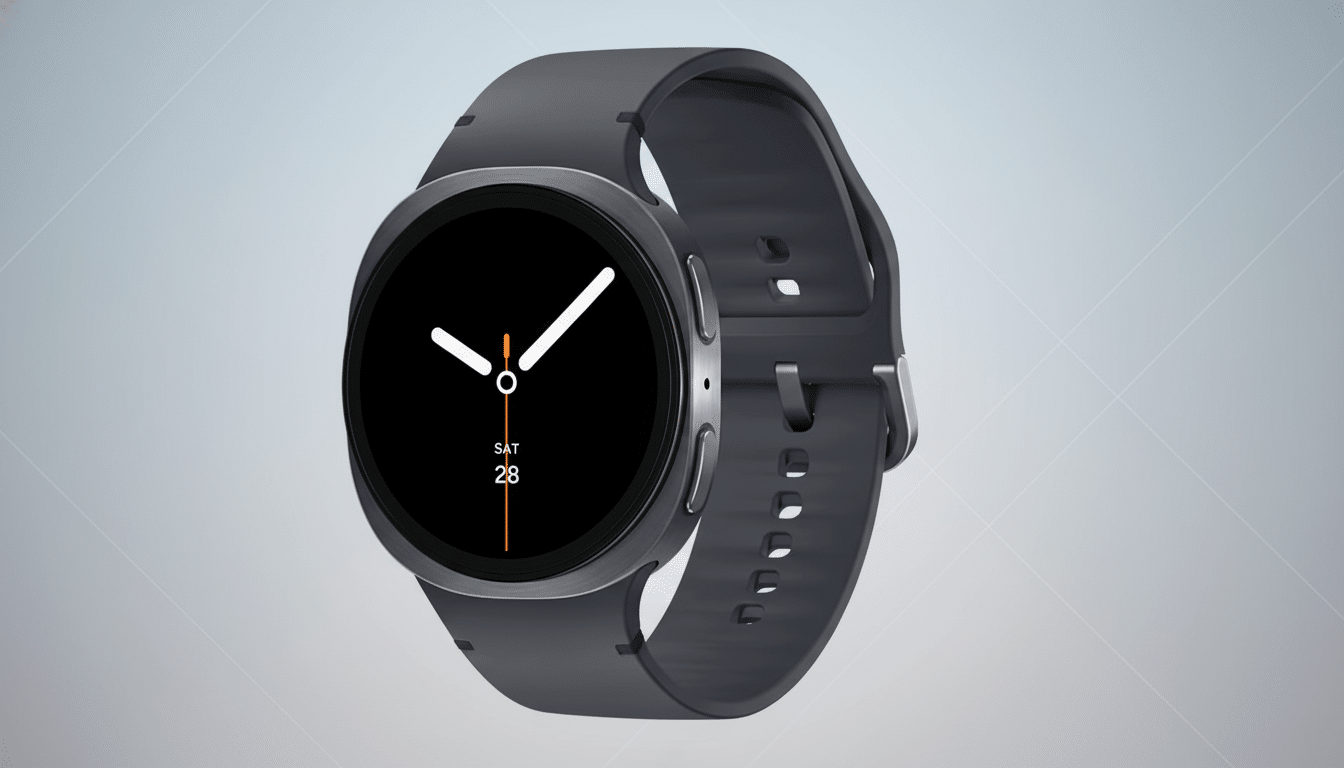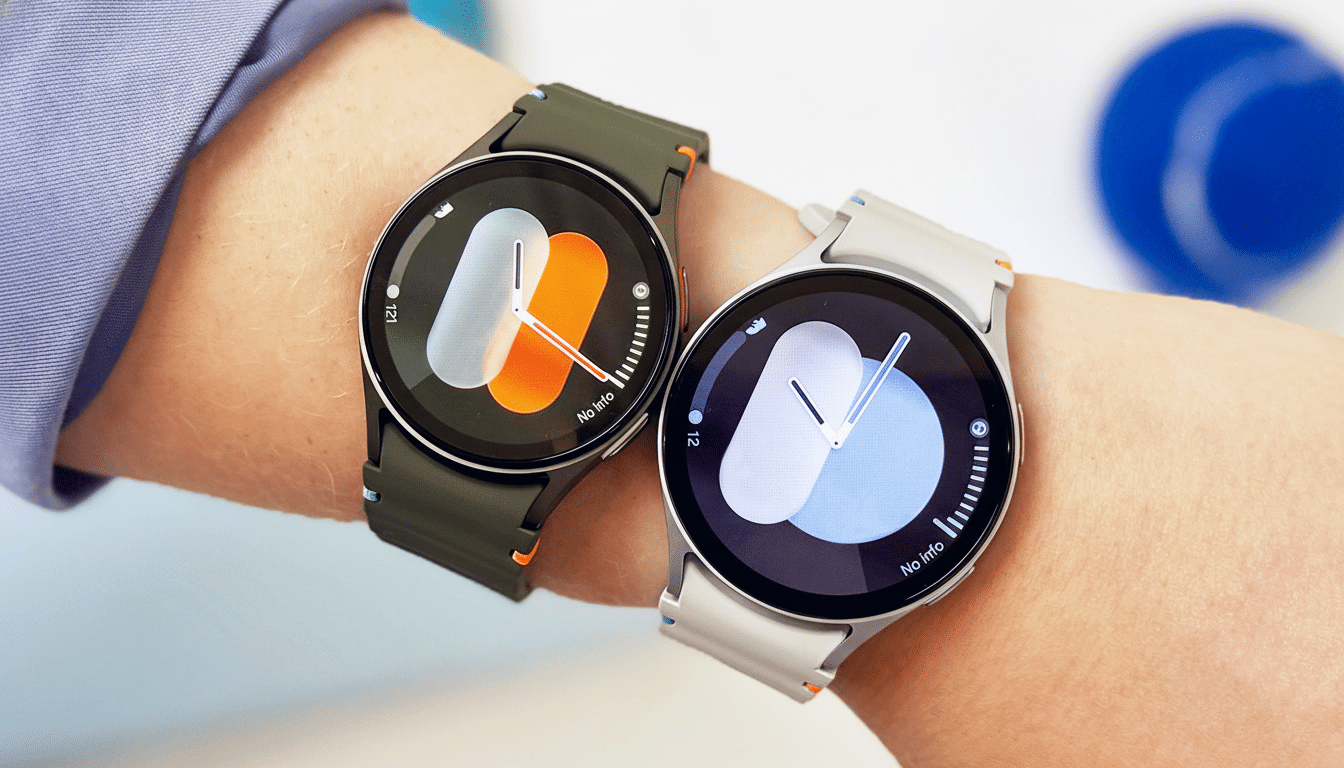Samsung’s newest mainstream smartwatch is leaner, brighter and smarter on paper, but there’s a catch: the Galaxy Watch 8 usually costs around $100 more than the Galaxy Watch 7 at today’s street prices. Following some in-depth hands-on comparisons and cross-checks with official specs and third-party testing norms, here’s a brief verdict on whether the premium is worth the real-world cost.
Price and configurations for Galaxy Watch 8 versus Watch 7
The Galaxy Watch 8 begins at approximately $349.99 for the Bluetooth 40mm build, and it’s not uncommon to see the Galaxy Watch 7 found around $249.99 when comparing respective sizes.
- Price and configurations for Galaxy Watch 8 versus Watch 7
- Design and display upgrades on Galaxy Watch 8 versus 7
- Performance and battery life differences between the watches
- Health and fitness features compared between Watch 8 and 7
- Smart features and software support on Watch 8 and Watch 7
- Who should pay the premium for Samsung’s Galaxy Watch 8

Each is $30 more for the larger 44mm case, and roughly $50 for each version with LTE. If your budget is strict, that $100 margin is the story; regular discounts make the Watch 7 one of Android wearables’ most aggressive values.
Colorways remain straightforward. Watch 8 comes in graphite or silver; Watch 7 is available in green or cream for the 40mm model and green or silver for the 44mm. For less discerning consumers who hardly care what a watch looks like, pricing could turn the tide before specs do.
Design and display upgrades on Galaxy Watch 8 versus 7
Samsung redesigned the Watch 8 case with a more squared-off “cushion” profile and what it calls a dynamic lug system to make tracking movements more comfortable. Reconfiguring internal components helped shave about 11 percent from the frame, a difference you’ll feel during sleep or long runs. Durability is still no joke: both generations feature 5ATM water resistance, MIL-STD-810H testing and an IP68 rating.
Displays remain the same size and have the same resolution — 1.5 inches at 480×480 for 44mm, 1.3 inches at 432×432 for 40mm — but brightness takes a leap on Watch 8. Peak luminance shines upward of 3,000 nits vs. the Watch 7’s 2,000 nits for extra brightness with less power use. Put bluntly, the Watch 8 remains readable on a midday jog when the Watch 7 is merely tolerable. To outdoor athletes, that’s a real quality-of-life upgrade.
Performance and battery life differences between the watches
Both watches are powered by Samsung’s latest five-core Exynos platform with 2GB of RAM and 32GB storage, and both run a new version of Samsung’s One UI on top of Google’s Wear OS. The Watch 8 comes installed with the latest One UI version, and the Watch 7 has had a series of major updates that have narrowed everyday differences. Where they separate is endurance.
Battery capacity increases on Watch 8 (325mAh in 40mm, 435mAh in 44mm) compared to the Watch 7’s 300mAh and 425mAh. Modest improvements, significant effect: Watch 8 lasted around 26 hours in mixed-use testing with the always-on display turned on and approximately 39 hours without it. Under the same conditions, Watch 7 averaged about 22 hours with AOD and about 28 hours without. That has been the difference between charging nightly and easily skipping one.
Health and fitness features compared between Watch 8 and 7
Samsung’s already touched all the bases on the Watch 7 — heart rate, SpO2, ECG support where approved, skin temperature, body composition (imperfect as it is), sleep tracking with snore detection and yes, even sleep apnea detection features in supported markets. It also brought with it an Energy Score, which crunches recovery and readiness into a direct-to-you 0–100 score.

The Watch 8 piles on deeper, AI-driven advice and guidance. Sleep Coach gets to know your circadian rhythm and pushes bed and wake goals accordingly, instead of just doling out generic advice. Vascular load estimations provide a further window to stress and recovery. For runners, a 12-minute fitness test — similar to the one used by sports science researchers called the Cooper test — helps drive personal training plans and in-workout cues. These are the touches that take the watch from being a passive tracker to a proactive coach.
Also included is a headline-grabbing sensor: an optical antioxidant status assessment via AGEs (advanced glycation end products). While not a replacement for lab work, AGEs are closely studied as a proxy for cumulative oxidative stress. An at-wrist snapshot could be useful for trending lifestyle changes over time, a capability rivals are only now starting to explore.
Smart features and software support on Watch 8 and Watch 7
Both watches draw from the same Wear OS app ecosystem, and both can manage calls, texts and tap-to-pay. Google’s Gemini assistant appears on the Watch 8 and has come to the Watch 7 via software, too, but some Galaxy AI health features are still exclusive to the Watch 8. In use, the AI integration of the newer model doesn’t insert itself where it shouldn’t be — suggestions for sleep timing, training cadences and context-aware nudges — which is a pleasant change from gimmicks.
In terms of longevity, Samsung is less strict about conforming to a flagship phone policy on wearables, but based on current guidance we could see the Watch 8 getting major upgrades for a longer period of time. If you keep the watch for a few years, that counts nearly as much as hardware.
Who should pay the premium for Samsung’s Galaxy Watch 8
If you work out outdoors, lust for a brighter screen, seek the quantifiable battery life gains and appreciate coaching plans that actually coach, the 8’s extra $100 is earned every day of the week.
Those training for a half marathon or who are working on sleep for performance will experience the benefits every day.
If your primary use case is largely tracking steps, a workout here and there and nightly sleep, the Watch 7 remains a good purchase when it’s discounted. For a lot less, it gives you the core health suite, smooth performance and solid build quality.
Bottom line: the Galaxy Watch 8 is the superior smartwatch. The question isn’t capability — it’s cost. AI coaching and the brighter display make it worth it for dedicated fitness users and early adopters. For bargain hunters, the Galaxy Watch 7 remains the Android all-rounder to beat.

